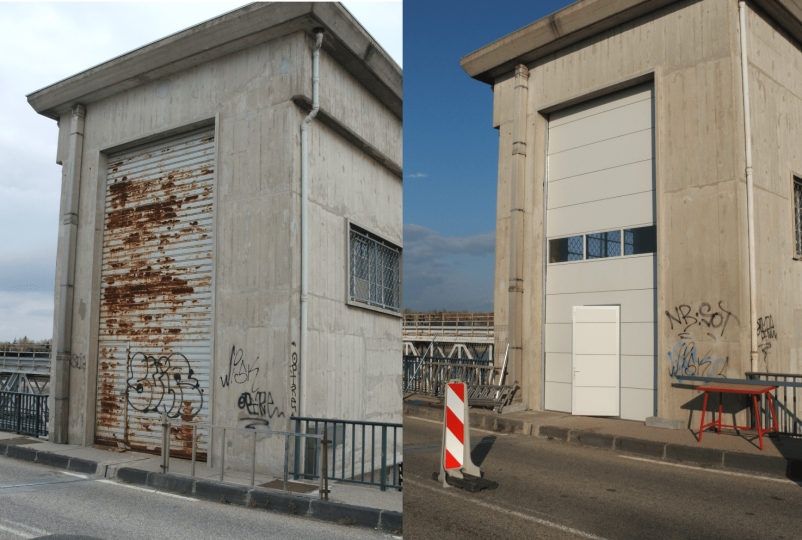When choosing an industrial or commercial door, the decision often comes down to two main types: roll-up doors and sectional doors. While both are commonly used in warehouses, fire stations, workshops, and other facilities, they differ significantly in structure, function, and suitability. But did you know there’s a third option that combines the best of both—and goes even further? Meet the Compact door by Rolflex.
Let’s explore the key differences between roll-up doors and sectional doors, and discover how the Compact door compares.
Roll-Up Doors
Roll-up doors—sometimes called roller shutters—consist of narrow horizontal slats that roll up into a coil above the doorway. Their main advantage lies in their space-saving design: the door rolls into a tight barrel, leaving ceilings and side walls relatively clear.
Pros:
- Very compact overhead footprint
- Durable in tough environments
- Low-cost for basic applications
Cons:
- No design flexibility (no glazing and limited finishes)
- Poor insulation properties
- Noisy operation and more frequent wear on moving parts
- Difficult to integrate a wicket door
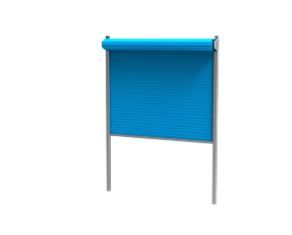
Sectional Doors
Sectional doors are made up of large insulated panels that slide upward on ceiling-mounted tracks. Unlike roll-up doors, sectional doors provide better thermal insulation and more aesthetic options, such as windows or different surface finishes.
Pros:
- Strong insulation and sealing
- Customization with glazing and color options
- Quieter and smoother operation
Cons:
- Requires ceiling space for tracks and panels
- Limits overhead space for cranes, lighting, or ventilation
- Tracks can interfere with building systems
- Standard integration of wicket door, but affects panel design and balance
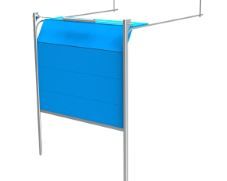
The Compact Door
The Compact door combines the advantages of both roll-up and sectional doors—without their compromises. Designed and produced by Rolflex in the Netherlands, this folding door system is engineered for maximum flexibility, space efficiency, and design freedom.
How Is the Compact Door Different?
Folds Instead of Rolls or Slides
Unlike roll-up doors (which coil) or sectional doors (which slide), the Compact door folds its panels upwards above the door opening—without tracks along the ceiling or walls. This ensures full overhead clearance, even in spaces with cranes or special installations.
Trackless, Ceiling-Free Design
No ceiling-mounted tracks means no interference with lighting, ventilation, sprinklers, or overhead cranes—something that sectional doors cannot offer.
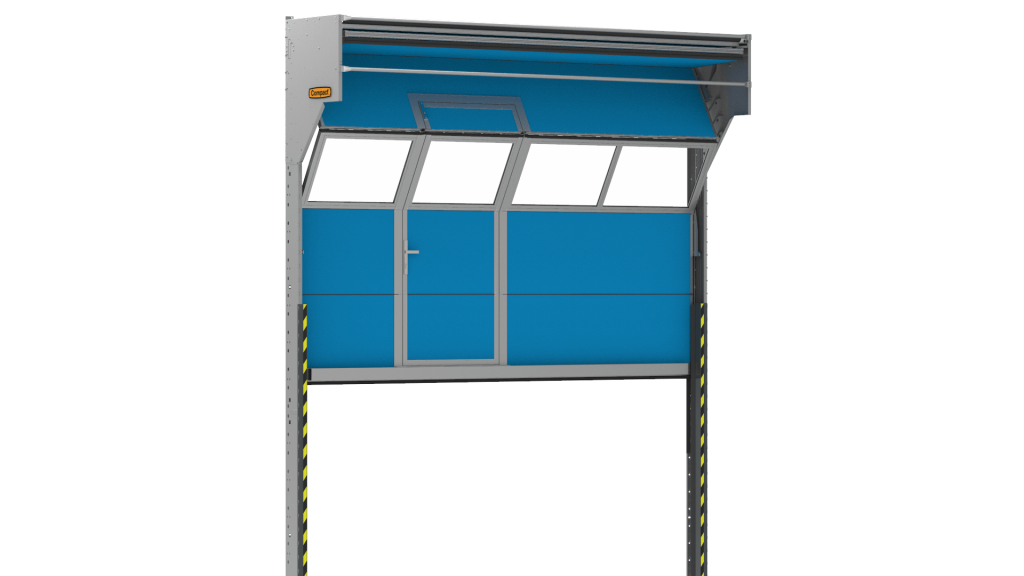
Insulated Panels and Quiet Operation
The Compact door uses insulated sandwich panels, much like a sectional door, but operates more quietly and efficiently thanks to its balanced folding mechanism.
Modern Look with Full Glazing Options
Where roll-up doors lack aesthetic appeal, the Compact door shines. Full or partial glazing, a wide choice of colors, and seamless integration make it ideal for showrooms, emergency services, car dealerships, and more.
Optional Wicket Door Without Compromise
Need pedestrian access? The Compact door allows for a built-in wicket door without disrupting the folding mechanism or aesthetics—something that’s difficult with roll-up doors and often clunky with sectional ones.
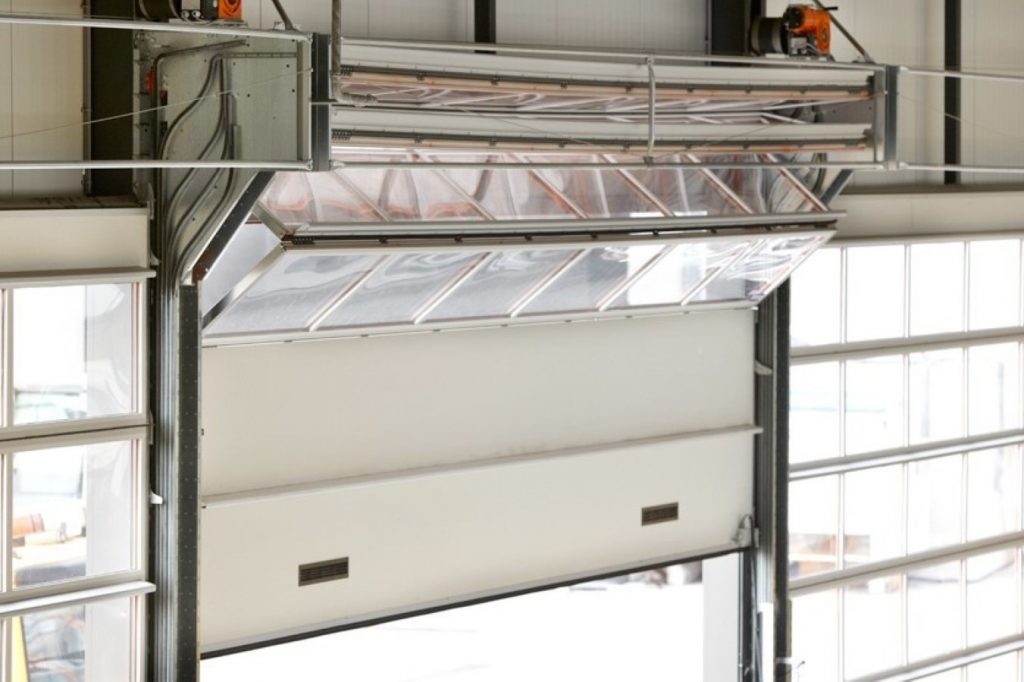
Discover the Compact Door for Your Project
Whether you’re designing a new facility or upgrading an outdated door system, the Compact door provides a future-proof, architect-friendly, and user-friendly solution that goes beyond the limitations of traditional doors.
Curious how the Compact door could fit your project?
Use our online configurator to design your own door, explore all available options, and see how it can be tailored to your needs.
